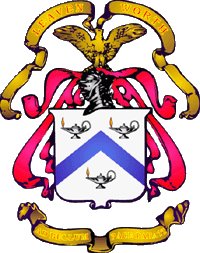Non-commissioned officers historically exemplify the best our nation has to offer. As the United States continues to build and sustain new armies in Afghanistan and Iraq, a critical dynamic routinely surfaces that many military professionals often take for granted. The Non-commissioned officer of today’s US Army is the action arm and delivery mechanism of US Government policy everywhere he serves. He is a warrior, statesman, policeman, school teacher, and an example to all of the national power of the United States of America.
Non-commissioned officers, or Sergeants, maintain the responsibility for interpreting the lofty national goals of US leaders into a globally deliverable product. It is the Sergeant who receives command direction, evaluates his available resources, studies his environment, weighs the risk and carries out the mission with his Soldiers and equipment. Often underestimated as simple and pawn-like, it is the Sergeants who creatively blend experience, innovation and tenacity into real effects on today’s modern battlefield.
As a warrior, the Sergeant is the sturdy leader his Soldiers strive to emulate and impress. He becomes a ‘big brother’ to many, a father to some, and the face of American determination to his enemies. His expert knowledge of his tradecraft and ability to impart that knowledge to subordinates and superiors alike makes his team virtually indestructible. The fame and gallantry of Audie Murphy in World War II was achieved while he wore Sergeant’s stripes. Today’s warrior Sergeant applies the same commitment toward tracking and capturing deposed dictators, capturing and killing radical terrorists, and defending terrorized local populations.
Ambassador and Sergeant aren’t historically connected titles, but as the US government extends its influence into remote communities and fledgling cities, he is the face of US foreign policy. The title Ambassador is usually reserved for State Department personnel, but it is the Sergeant on the ground who is forging relationships and building rapport as the Army seeks to defeat insurgencies in two countries simultaneously. It is the Sergeant who extends his hand to the Afghan farmer whose home was recently besieged by Taliban militants, it is his strong arms that hoist a horrified child and returns her to her parents following hostilities.
Protecting the peace and sustaining the peace in Afghanistan and Iraq requires policemen. In many cases, local police have deserted their posts, turned on the populace, or never established a presence in the first place. In these cases, it’s the US Army Sergeant who establishes security and sets about protecting the populace over time. He is integral in training the indigenous police to assume the post and make the peace a lasting effect.
As new schools, army and police barracks, and community centers come to life in Afghanistan and Iraq, it is the US Army Sergeant who trains the trainers and builds the curriculum to sustain training and professionalism over time. There are well-documented cases of Sergeants actually assuming the front of classrooms to reinforce the US message of help and assistance. Sergeants are also the key trainers as their own Soldiers strive to advance in rank and carry on the traditions of the Non-commissioned officer corps.
Through nine years of protracted conflict in the War on Terror, western television images have portrayed names like Franks, Abizaid Petraeus, Odierno, McChrystal, Rodriguez and Casey as leaders of US efforts in the War on Terror. However, in places like Khowst, Ramadi, Karbala, and Kunduz it is the face of the US Army Sergeant that’s emblazoned on the minds of the populace. It’s the leader who crashed through the door, walked the street, and built the clinic that leaves the lasting image. He is the action arm and delivery mechanism for US policy, and he is the strength of “Army Strong.”
Monday, January 25, 2010
Subscribe to:
Posts (Atom)

